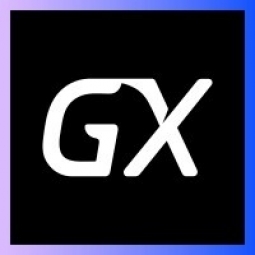用例
- 流程追踪
- 库存管理
服务
- 系统集成
关于客户
Animales sin Hogar (ASH) 是一家总部位于乌拉圭的非营利组织,致力于促进宠物的收养和负责任的饲养以及一般动物福利。该组织成立于 2003 年,一直不懈地努力确保动物的福祉,特别是那些无家可归或需要照顾的动物。 ASH 的工作人员由热衷于动物福利的志愿者组成。该组织最初建立了一个网络应用程序,使人们能够发布有关丢失宠物或需要收养的动物的通知。然而,随着组织的发展,其需求也随之增加,从而导致了更全面的管理系统的开发。
挑战
Animales sin Hogar (ASH) 是一家总部位于乌拉圭的非营利组织,成立于 2003 年,旨在促进宠物的收养和负责任的饲养以及一般动物福利。成立一年后,ASH 使用 GeneXus 技术开发了一款网络应用程序,主要是为了让人们能够发布有关丢失宠物或需要收养的动物的通知。然而,随着组织的发展,其需求也在增长。 ASH 需要一个更全面的系统来保存记录、管理和定义动物及其治疗、收养和后续行动的可追溯性。该组织还希望为与动物福祉不同方面相关的帖子创建一个空间。面临的挑战是扩展现有的解决方案并开发一个可以处理与动物相关的所有数据的管理系统。
解决方案
为了应对这些挑战,ASH 与 DVelop 合作开发了移动应用程序,并将系统迁移到最新版本的 GeneXus。新系统旨在发布、共享和公开有关流浪动物的信息。新的 ASH 网络系统的后端包含 6,000 只动物的信息,包括它们的入境日期、疫苗、阉割以及将它们留在那里或收养它们的人的身份。该系统还能够管理动物的位置和位置变化,关联每只动物接受的治疗,管理每只动物以及与兽医的关系,以及管理收养申请、访问、收养和后续行动。该系统还允许用户发布出版物、在社交网络上分享自己或他人的出版物、查看所有其他出版物、输入收养请求以及查看他们的帖子、收养申请和已处理的收养。
运营影响
数量效益

Case Study missing?
Start adding your own!
Register with your work email and create a new case study profile for your business.
相关案例.

Case Study
Hospital Inventory Management
The hospital supply chain team is responsible for ensuring that the right medical supplies are readily available to clinicians when and where needed, and to do so in the most efficient manner possible. However, many of the systems and processes in use at the cancer center for supply chain management were not best suited to support these goals. Barcoding technology, a commonly used method for inventory management of medical supplies, is labor intensive, time consuming, does not provide real-time visibility into inventory levels and can be prone to error. Consequently, the lack of accurate and real-time visibility into inventory levels across multiple supply rooms in multiple hospital facilities creates additional inefficiency in the system causing over-ordering, hoarding, and wasted supplies. Other sources of waste and cost were also identified as candidates for improvement. Existing systems and processes did not provide adequate security for high-cost inventory within the hospital, which was another driver of cost. A lack of visibility into expiration dates for supplies resulted in supplies being wasted due to past expiry dates. Storage of supplies was also a key consideration given the location of the cancer center’s facilities in a dense urban setting, where space is always at a premium. In order to address the challenges outlined above, the hospital sought a solution that would provide real-time inventory information with high levels of accuracy, reduce the level of manual effort required and enable data driven decision making to ensure that the right supplies were readily available to clinicians in the right location at the right time.

Case Study
IoT Gateway Enables Faurecia to Improve Traceability for Customers
While Faurecia has a long track record of providing its customers with exemplary products, the increasing need to provide customers traceability for the parts it was producing motivated the company to further support these efforts. The large automotive OEMs expected Faurecia to be able to both track the process of operations and production and to make that information available on demand. For example, customers wanted to know which airbags were added to which cars, as well as detailed data characteristics about how each airbag was installed, including torque and angle of installation.

Case Study
Hardware Retailer Uses Data Warehouse to Track Inventory
Ace tracked which products retailers ordered, when they were ordered and shipped. However, the company could not track or forecast actual sales. Data used for reporting was up to a one-week old, owing to performance and data cleansing issues. Requirement to integrate wholesale and inventory data with POS data to help drive key business decisions, improve category management, lower inventory costs and optimize pricing. Reliance on custom coding to integrate POS data was excessively resource intensive and led to major performance constraints.

Case Study
Remake Enterprise-to-production System
The client was running a legacy material flow tracking system and wanted to replace the system with a more effective one as the system was increasingly expensive to maintain and support and also was not extendable. The client's IT landscape was filled with modern applications and it was difficult to interface the material flow tracking system with modern applications.









